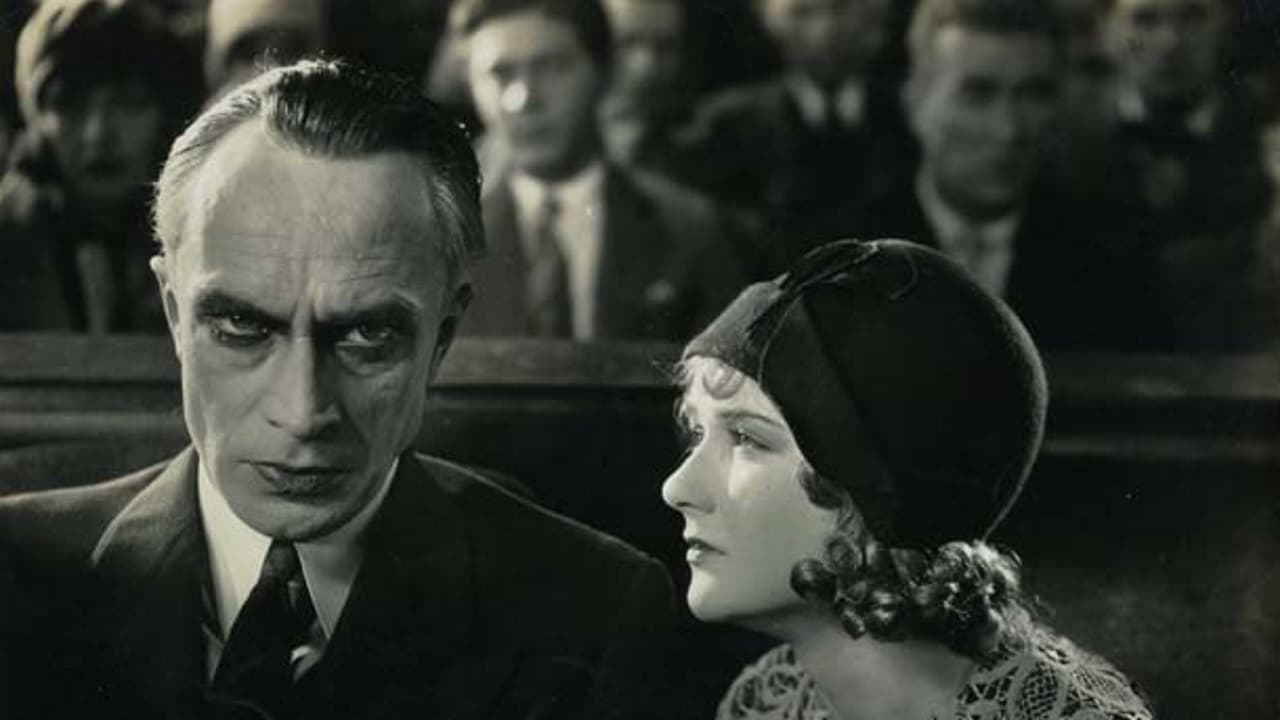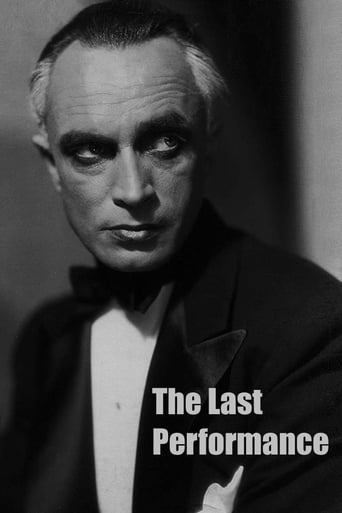BlazeLime
Strong and Moving!
SincereFinest
disgusting, overrated, pointless
Dorathen
Better Late Then Never
Cristal
The movie really just wants to entertain people.
Bonehead-XL
Universal was enamored of setting stories in the theater, weren't they? Perhaps "Phantom of the Opera" set the precedence. "The Last Warning" featured a masked murderer terrorizing Broadway. "The Last Performance" sets a love triangle among a magic act. Once again, Mary Philbin plays the object of desire of a murderous older man. While "Phantom" had obvious grotesque attributes and "The Last Warning" was basically an old dark house mystery, "The Last Performance" is a melodrama with light fantastic elements.The story is typical. Erik the Great, a stage magician and hypnotist, is in love with Julie, his female assistant. He plans to marry the girl as soon as she turns eighteen, a story turn likely to gross out modern audiences. Julie only has eyes for Mark, a vagabond that Erik takes under his wing. "The Last Performance" neatly follows the three-act structure, with Erik discovering the truth about his love at the 18 minute point, the "seven swords through the box" magic trick going predictably wrong half-way through, and the last act set during a trial, with the case-solving testimony serving as a concise climax.Of most interest to horror fans is Conrad Veidt's performance. Veidt was made for the silents. He says so much with simply a shift of his brow, expressing heart-break or jealousy with only his face. Despite the temptation to compare the two, Erik the Great isn't Erik the Phantom. He's not a monster, rather a fair man who commits wrong only out of love. The hypnotism sequences make great use of his glaring eyes. No wonder Veidt was nearly Dracula. Conrad's performance alone makes the sappy finale believable. The rest of the cast is thin, with Mary Philbin making goo-goo eyes at Fred MacKaye, a marginal matinée hero.While lighter on expressionistic atmosphere then you'd hope, "The Last Performance" still has several stand-out moments. An early bit has Veidt walking a catwalk, shadows criss-crossing over his face. When the lover's affair is revealed, his shadow is cast huge on the wall, dwarfing the girl and her mate. Veidt's power as a hypnotist is displayed by overlaying his glaring face over the character performing the requested action. A memorable early scene has the man mesmerizing a skeptical audience member, their theater booth suddenly spinning around them."The Last Performance" is another example of routine silent film material elevated by its lead actor. After years of obscurity, the film was recently released by the Criterion Collection… Kind of. It's a special feature packaged with "Lonesome," a later film by the same director. This version has Danish titles with English subtitles and is apparently missing several sound sequences. The film is concise enough that I can't imagine those scenes would add much.
cynthiahost
It is a part of the recent Criterion collection of Paul Fejos film. Unfortunately this is not restored .The sound effects and music and talking sequences are still lost.The print is good.Not great.It clocks at 59 minutes and some odd seconds. At least on my machine.Although historically it claims to have been made in 1927 and premiered in 1927.But there is a sequence where Mary Philbin ,who plays Julia , is looking at two pictures of Conie,in the dressing room. One is dated 1926,but, another one is dated 1929! Was this scene added on when the talking sequences was added in 1929?It's silent.Was the filmmaker making it take place in the future? Or the truth was this silent made in early in 29 adding sound and talking sequences.We'll never know.But 1929 date is in one of the props. Never less this is a good movie.Too bad the better version is lost.But Conie is good as the strange magician and hypnotist Erik The Great,who is in love with his assistant Julia.He has another assistance a male one,Buffo played by Leslie Fenton, that I got confused with another British actor,the one who played Annabella's husband,in wings in the morning.Buffo is also in love Julie.Then a burglar comes into Eriks hotel room,a starving man MARC ,played by Fred Mackaye.Conie feels sorry for him and hires him as a another assistance.Now it's three men who want Julia.Julia falls for Marc ,which upsets Conie, but he acts professional .Buffo acts sneaky too. Before you know it Buffo and Marc are fighting over Julia.Conie wants Julia for himself .So he has a plan.If you want to know this plan then this film ,on d.v.d, is available in the criterion collection,as part of the main feature, lonesome,1928and the talking print version of Broadway.Available at Criterion and amazon.com 09/19/12 After looking further research,the pamphlet, It was made in 1929 not 1927.Paul Fejos,the last moment was in 1927
hamilton65
Often termed a horror film (due to it's background of stage magic) this is really a tale of thwarted love. Conrad Veidt excels as the kindly Erik the Great who finds his soon to be bride has fallen in love with one of his assistants. The discovery scene is a superb piece of acting from Veidt, as he shifts from shock to heartbreak, struggling to be magnanimous, and then gradually to cold calculation with the subtlest changes of expression.
These moments and a dynamic trial scene elevate what is otherwise an okay backstage melodrama into a truly compelling tale of jealousy and redemption. Palo Fejos, director of the wonderful "Lonesome", injects some stylish visuals.The version I've seen is a truncated and mute print of 48 minutes, so I may have missed some of the film's finer points.

